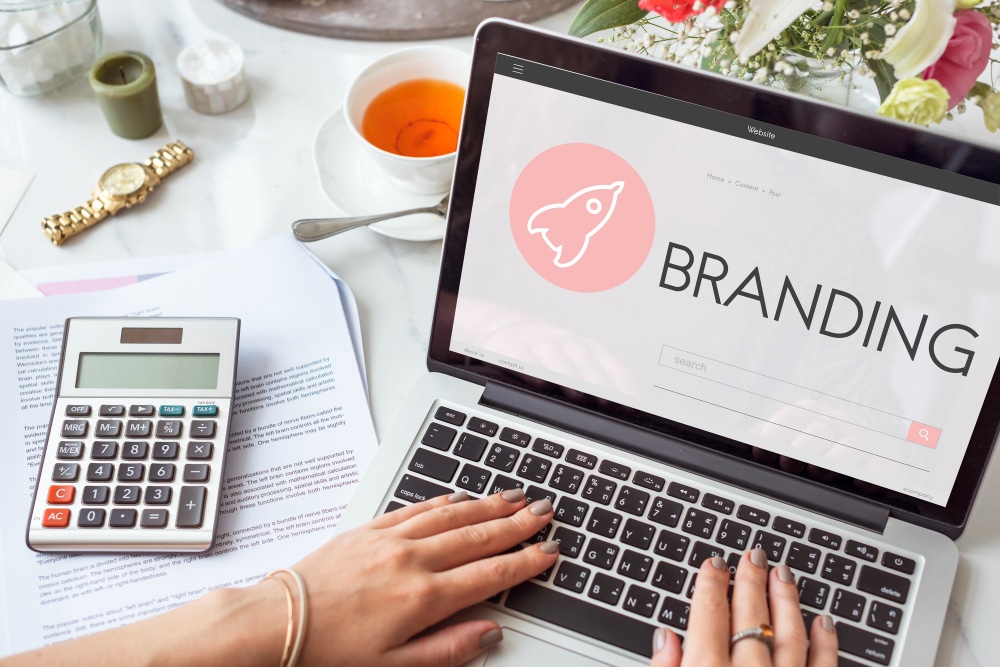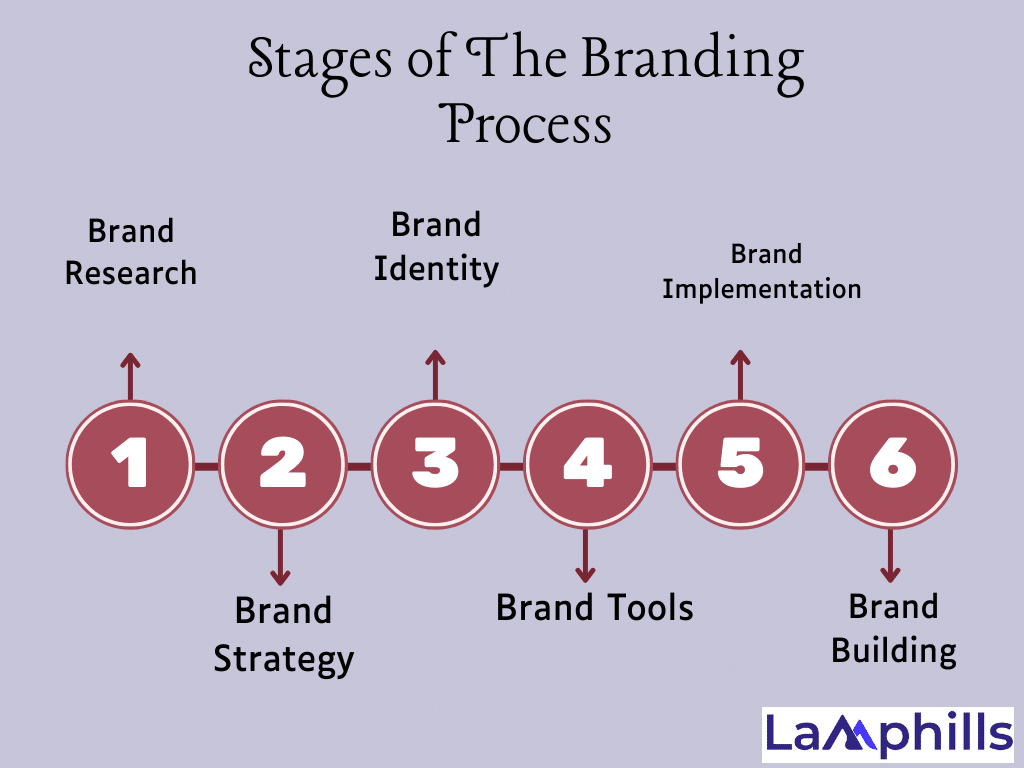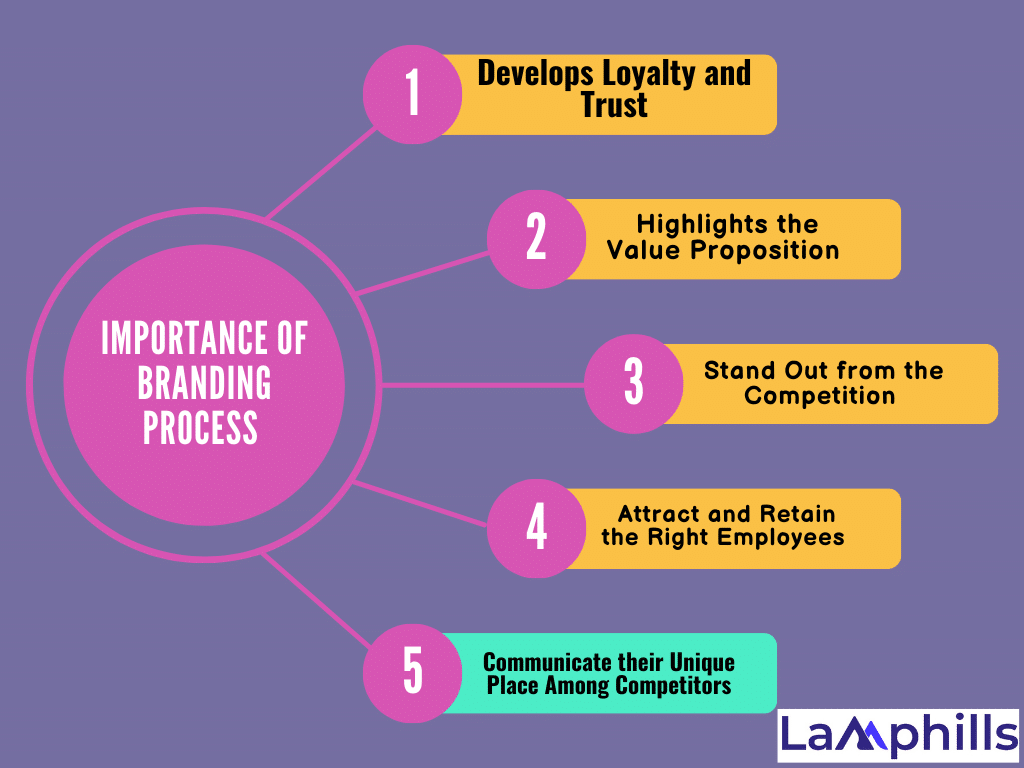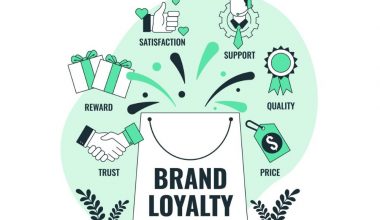Have you ever wondered how ideas like “logo,” “brand identity,” “brand positioning,” and “brand management” fit together to create a successful brand? When I first began out in business, I thought it was as simple as designing a logo and perhaps a slogan. But as I learned more, I realized branding is so much more than that—it’s the fundamental lifesupport of your company. To enlighten you more, in this article, I’ll go over the branding process step by step, discussing how each piece works together. Whether you’re starting a new business or renovating an old one, understanding this process is essential for creating a brand that flows with your target audience and stands out from the crowd.
Key Takeaways
- A successful brand goes beyond just visuals; it’s the entire perception of your business, from your values and messaging to how you connect with your audience.
- Understanding your market, competitors, and target audience is critical. The insights you gather in the research phase shape every other step of your branding process.
- A well-developed and consistent brand identity helps build trust with your customers, making them more likely to stay loyal and advocate for your business.
- Developing a clear brand strategy ensures that your business grows in a purposeful direction, aligning your company’s vision, values, and goals.
- Once your brand is established, the work doesn’t stop. You must continually evolve your brand to adapt to changes in the market and customer preferences.
What is a Brand?
A brand is fundamentally about defining who you are. It’s more than simply a logo or a color scheme; it’s how people perceive your brand. ally obsolete, but also no longer fit with its goals and values. That is, a brand encompasses everything your firm stands for, from your communication style to the graphics that reflect it. It’s what sets you apart from the competitors. Whether you’re selling a product or a service, your brand is how you want to be known in the marketplace. Think of your brand as the face of your business—it’s how people perceive and connect with you.
What is The Branding Process?

The branding process is a sequence of purposeful efforts aimed at creating a unified identity that reflects your company’s beliefs, vision, and personality. This process includes research, strategy formulation, design, and implementation, all of which result in a consistent and identifiable brand. The branding process is a series of well-defined activities designed to develop a business’s value system and communication framework, resulting in a coherent brand identity.
The Purpose of The Branding Process
Why go through all this trouble, you might be asking? The purpose of the branding process is to define the best strategy for your company to thrive in its market. This is because it creates a clear vision of who you are and where you want to go. It also:
- Defines what makes you stand out.
- Shapes your company’s ideology and core values.
- Align your team so everyone is on the same page.
- Attracts top talent who believe in your mission.
- It sets a vector for growth and overall brand development.
- It helps the designers and developers communicate better, creating a strong company-related and market-tailored visual identity.
- It aligns the different people on your team and turns them into the company’s evangelists who preach the vision and values of your brand.
- It helps to attract high-caliber talent that may increase the company’s potential in the long run.
One of my favorite examples comes from a time when I was rebranding a retail business. The CEO wasn’t sure why we needed to revisit their entire strategy. But after going through the process, we discovered a mismatch between their internal values and the message they were sending to customers. Aligning those things changed the game, both for internal morale and how customers perceived the brand.
When Do You Need The Full Brand Process?
Like I said before, creating branding is an ongoing and ever-changing process. However, this does not imply that you need to continuously evaluate the core strategy when dealing with brand-related marketing operations.
Although the branding process comprises several phases, they are all designed to help the firm through different periods of its life. As a result, if you need to make changes to your logo design to make it more stylish and current, you should not return to phase two, defining your brand strategy. So, when do you require the complete brand process? imagine these common instances:
- The launch of the company.
- The merger of two companies.
- The launch of a brand-new product or line.
- After decades of avoiding updates or adjustments.
In addition, bear in mind that some brand agencies offer so-called brand equity analysis that helps both sides realize whether the company needs to go through the whole brand process or not.
How Long Does the Branding Process Take?
The timing for finishing a branding process varies depending on whether you’re starting from scratch or renewing an existing one. It may take several weeks, while some businesses may require months to develop and implement their new branding approach.
For example, conducting research can take a few days to a week, whereas developing the aspects of your brand identity may take a month. Furthermore, depending on the intricacy of the website, it can take between two and eight months to develop.
However, hiring a branding firm might assist speed up the process because they are qualified individuals who know exactly what you need. For your branding strategy to succeed, you should be prepared to nurture it and invest a lot of time and resources in its success. There is no rushing an effective and efficient branding process.
Stages of The Branding Process

The branding process steps consist of six distinct stages and each one is crucial to creating an engaging brand. However, some companies may need to pay extra attention to certain steps. For example, a business specializing in design may spend most of its resources on establishing the visual aspects of its brand, including the logo and marketing materials. In contrast, a retail company that depends on sales may prioritize brand building to increase awareness and reach a broader audience.
#1. Brand Research
The first step is always research. This is where you gather information about your company, your competitors, and your target audience. During this phase, I’ve often found clients surprised at how much they didn’t know about their market. It’s amazing what you can learn by stepping outside your bubble.
In one project, we conducted internal interviews, competitor analysis, and audience surveys. The results helped us pinpoint exactly what was missing in their current branding and how to position them moving forward.
Key research activities include:
- Examining your current market position.
- Analyzing competitors.
- Understanding your target audience’s needs and pain points.
- Conducting a brand audit.
- Clarify the vision, goals, and values of the company.
- Write the correct positioning statement.
- Understand the company’s mission, brand values, personality, and USP.
- Define strengths and weaknesses.
- Identify opportunities.
Only when the research is conducted and a comprehensive, wide-ranging report is compiled, the brand agency move to another stage – developing brand strategy.
#2. Brand Strategy
Creating a brand plan is the most important phase that no one can afford to overlook. It establishes the direction and provides the sturdy basis for laying the initial bricks of your brand framework. This stage should also be revisited by companies that rebrand.
The goal of this phase is to define and demonstrate to the company which route it should take to expand, scale, achieve its potential, and complete the primary mission.
At this point, the team examines the company from both the consumer and the company’s perspectives, attempting to strike the ideal balance between the two. The agency creates a design brief for the project that explains essential parts of the brand structure, including:
- Vision;
- Purpose;
- Target audience;
- Competition;
- Brand value, promise, and proposition;
- Brand personality;
- Brand emotion range;
- Brand positioning;
It also identifies ultimate, short-term, and long-term goals and outlines specific rules and guidelines. Finally, it declares the reasons why the company wants to build the brand or do re-branding to ensure that everyone is on the same page.
#3. Brand Identity
Here’s where things get exciting—creating your brand identity. This is where your strategy becomes visual. It’s about translating your company’s values and personality into tangible design elements.
When we were rebranding a creative agency, the team was torn between three logo designs. After several rounds of feedback and revisions, we landed on a design that not only looked great but also perfectly encapsulated their creative, bold spirit. As a rule, at this stage, the digital agency develops such elements:
- Name
- Logotype
- Typeface
- Patterns and icons
- Color scheme
- Mascot
- Tagline or catchphrase
- Message
- Imagery
- Personality and style
- Brand voice
- Business collateral
- Advertising
- Packaging
- Stationery suite including business cards, flyers, brochures, notebooks, and even mugs and pencils with the company’s emblem.
This phase implies collaboration from both sides. The agency will come up with a design that reflects the company’s personality, goals, and visions and at the same time resonates with the target audience; whereas, the company should provide feedback to achieve the best result.
#4. Brand Tools
In addition to your overall plan, your brand tools will help place your company on the map. According to current data, 98% of small businesses have a website, demonstrating that it is now a necessary component in the digital age. You can create one from scratch or redesign an existing one to make it more visually appealing and interesting.
A visual identity package isn’t the only tangible result of your branding approach. You may also receive some other deliverables. These valuable assets attract engagement, traffic, warm leads, and revenue. Furthermore, they are tools for growing your brand.
visibility and obtain marketing goals. Depending on your goal and strategy, you may need to develop such components as:
- Website
- Blog
- Video or YouTube channel
- Accounts on social media platforms like Facebook page, Twitter Page, Instagram, Pinterest
- Digital newsletter
- Industry-related conferences and events
- Awards program
- Book
- Research project
Lastly, your website should reflect your brand positioning and convey appropriate messages to your target audience. It should also reflect your brand identity: include your logo and tagline and apply your brand’s color scheme.
#5. Brand Implementation
This checklist will be of great assistance too,
Finally, the exciting part begins: executing your brand. This is where you reveal your new brand identity to the world. I always recommend starting with an internal launch to verify that your team is on board and knows the new strategy. Once your staff is on board, you can go on to the external launch, which could include events, marketing efforts, or even a simple social media announcement.
The implementation of a new brand identity can take a variety of shapes and last anywhere from one day to several months. Everything begins with planning the roll-out. Depending on the scale and plan, you may need to separate internal and external launches. This strategy will offer your company a good start because your employees will
be on the same page as you. Your employees will be well-educated and versed in the company’s ideology, which helps them preach your ways and communicate them through their interactions with customers to maximize the overall effect. After that, you may proceed to the external launch.
External launch refers to introducing your new brand identity to the market. It could be a single event with a big impact or a series of activities that disclose the brand in an inconspicuous, organic way. It may take a single day or several months. Choose the appropriate model based on your strategy, goals, and market preferences.
However, there is one important point to consider. When it comes to external launches, customers are the priority. The organization should prioritize its target demographic and send them the right message at the right time. It’s also your time to make a good first impression, as an exterior launch always draws attention.
#6. Brand Building
Whether you like it or not, brand development is an ongoing process, and the brand launch is only the beginning. The market is ever-changing, and the preferences and expectations of the target audience fluctuate. You must keep up with global trends and adapt your brand to new norms and regulations.
Sometimes you need to add a new asset because the market requires it, such as TikTok videos or Instagram ads. Sometimes you need to abandon old habits, such as Tumblr posts. Other times, you need to freshen your strategy by making some new tweaks to time-tested yet still popular tactics.
Hence, this phase requires collaboration with a digital marketing agency to do various important activities like
- Develop SEO strategy;
- Create Social Media campaigns;
- Run email campaigns;
- Launch Paid advertising (PPC).
The core objective of this stage is to help your company navigate through all the obstacles that appear on its way and, at the same time, cement a solid brand framework for your company.
In addition, measure your strategy’s performance against your business goals and adjust your branding accordingly. Effective brand building promises long-term success and continued growth for your company.
Importance of Branding Process

Building a brand is a long-term investment, but the rewards are immense. Here are some key benefits I’ve seen firsthand:
#1. Develops Loyalty and Trust
“People buy brands, not products.” This proverb remains true, as the most effective branding strategies are based on trust and loyalty. People buy from brands they know, and a survey found that 46% of customers are willing to spend more to buy from trusted companies.
When your branding features are intriguing and engaging, they inspire a positive response from your target audience and help you become well-known in your niche. It assists you in increasing recognition and connection among your target audience. Eventually, this will build trust, and clients will be confident in the quality of your products and services.
#2. Highlights the Value Proposition
Your company’s value proposition is a summary of the unique selling features and benefits that clients receive when they purchase from you or subscribe to your service. It is what you want your organization to be recognized for. For example, Amazon is well-known for its extensive product range, great customer service, and same-day shipping.
Establishing and articulating a compelling value proposition is critical since studies reveal that 76% of companies experienced significant growth over a decade. There are numerous ways to demonstrate your company’s value proposition, including developing distinctive and memorable logos, taglines, and demos.
#3. Stand Out from the Competition
Aside from highlighting your company’s value proposition, the branding process determines what sets you apart from your competitors. For example, when it comes to airlines, effective branding campaigns have informed people that Ryanair provides low-cost flights while Emirates offers luxury options.
Each stage of the branding process will help you identify your market position, making it easier for potential customers to differentiate your company from the competition.
#4. Attract and Retain the Right Employees
A successful branding strategy not only attracts customers but also helps you keep top talent in your company. When a company is transparent about what it stands for, it attracts skilled employees who share the same values. Moreover, these employees tend to stick around because their sense of purpose is fulfilled.
#5. Communicate Their Unique Place Among Competitors
Consumers do not interact with your brand solely to buy something. Your brand is an experience that can provide value beyond a physical product. You can leverage your experience, along with other characteristics, to better position oneself in a competitive market.
Shake Shack, for example, is a fast-casual hamburger restaurant. What sets them apart from the other innumerable burger chains? Shake Shack prides itself on using antibiotic- and hormone-free foods, positioning itself as a modern take on the iconic burger establishment. Customers identify Shake Shack as a modernized version of classic comfort.
How do you define brand identity?
Brand identity expresses how customers, competitors, and the general public perceive your company. The brand identity encompasses your principles, brand personality (including voice and tone), and visual aesthetic. Your brand identity is communicated in every aspect of your business, from your logo to your brand marketing, copy, and in-store experience.
What is in a Brand kit?
A brand kit is a document or guide that contains all the information someone would need to represent your brand in a specific application.
How do you build a brand with no money?
To build a brand with no money, use the information in this guide to brainstorm ideas and capture your vision on paper—everything from your target audience to your unique brand voice. Once you’ve established a set of guidelines for your brand identity, you’re ready to build a recognizable brand. If you can’t hire a pro during the brand-building process, use free tools online to help you find a company name, create a logo, develop templates for social media posts, and generate compelling copywriting.
Conclusion
Building a successful brand is more than just having a bright logo or a clever phrase; it’s about making a real connection with your target audience. By taking these steps, you’ll create a brand that connects with your customers and positions your company for long-term growth. So, whether you’re starting a new business or renewing your existing one, make time to invest in your branding process. Trust me, it’s worthwhile.
References
Related Articles
- Small Business Branding Ideas: 15 Creative Ideas for 2024
- Inspiring Brand Voice Examples: How Top Companies Craft Their Unique Identity
- Content Monitoring Process: How I Mastered Content Monitoring Using Tools, Techniques, and Best Practices for 2024
- How to Choose a Social Media Content Creator: 6 Best Tips for Your Brand






